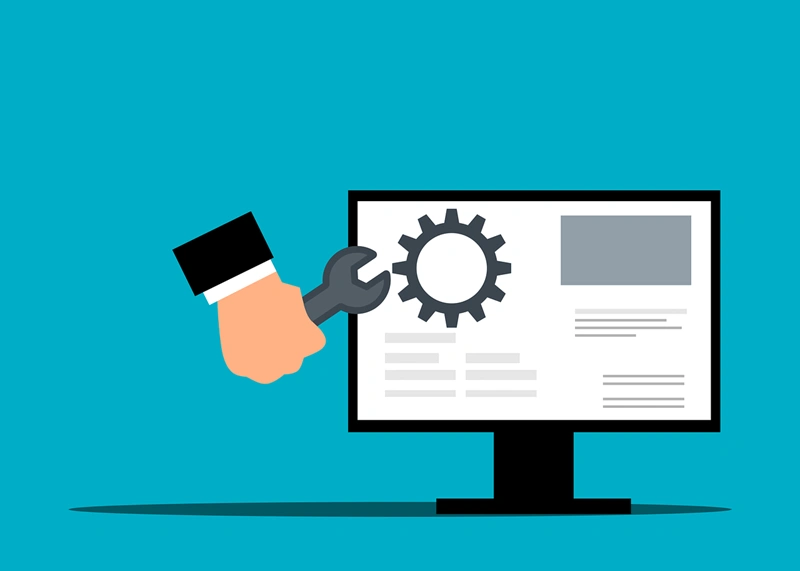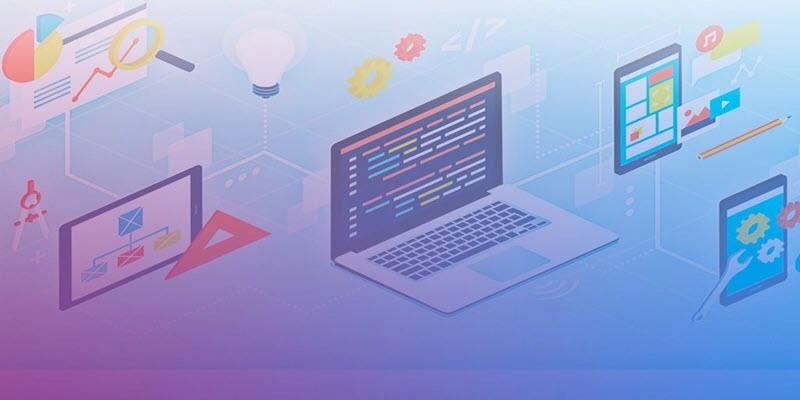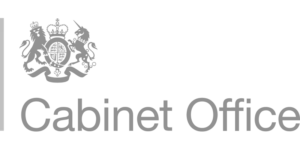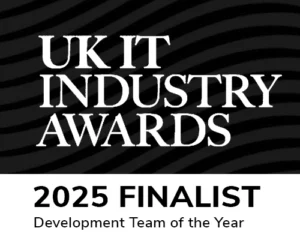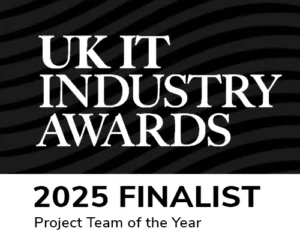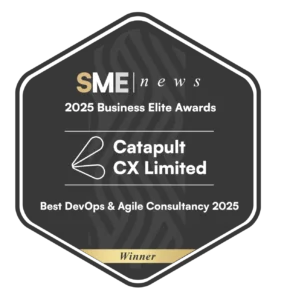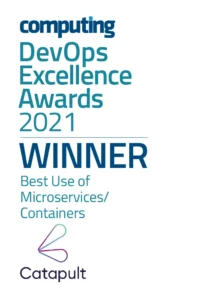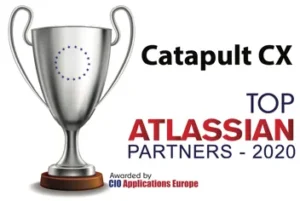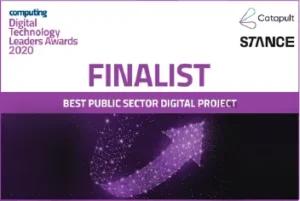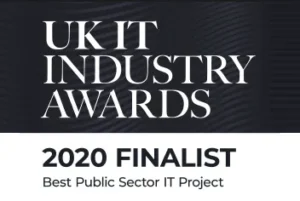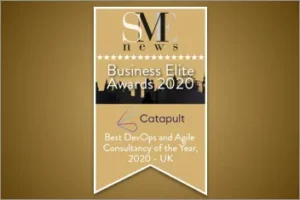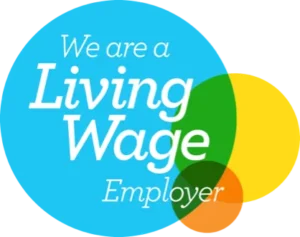Project to Product is a strategic shift that redefines how IT organisations deliver value moving from short-term project execution to continuous product innovation. By aligning teams to value streams and focusing on customer outcomes, IT leaders can respond faster to change, reduce waste, and accelerate digital transformation.
The idea is to reshape software development so businesses can keep up with digital transformation. Technology moves fast. If a software development project takes a long time to get to market, a newer version is often necessary before the original is ready.
Project to Product progresses with technology to meet user needs in real time instead of addressing changes later. To explore this philosophy, you must first understand the differences between projects and products. Then, we’ll discuss the roles of DevOps and Agile methodologies. Finally, we’ll talk about the benefits of shifting from Project to Product.
Catapult CX supports IT leaders in adopting a Project to Product operating model using value stream alignment and Agile transformation.
Project to Product Explained
Project to Product is gaining popularity as part of an IT revolution. Traditional project management measures success by milestones during creation. Once teams complete all the tasks, the project is over. Modern product management measures success by the value offered to customers. Teams don’t finish products until the deliverables are no longer on the market.
Dr. Mik Kersten
Dr. Mik Kersten created the Project to Product philosophy. He published a book titled “Project to Product: How to Survive and Thrive in the Age of Digital Disruption with the Flow Framework” in 2018.
Kersten believes shifting from project to product creates software that provides continuous value.
A key goal of the book is to define a common language to get the business and technology sides working and collaborating effectively around company and customer success.
DevOps and Agile methodologies are essential elements of Project to Product. All three concepts revolve around these activities:
- Responding to user feedback and market changes
- Encouraging flexibility and real-time adjustments
- Resisting tendencies to stick to earlier decisions
- The Flow Framework and Value Streams
Project to Product consists of the Flow Framework, value stream metrics, and value stream networks. A value stream includes all activities that deliver value to customers. Creating value streams for each product enables IT leaders and organisations to measure outcomes instead of tasks.
The Flow Framework sets up metrics to track each value stream for bottlenecks that slow software delivery. This Agile framework defines productivity as the ability to address features, defects, risks, and debts.
Project to Product teams embrace value streams and the Flow Framework. They follow the DevOps fundamentals of flow, feedback, and continual learning. This mindset gets operations teams involved much earlier in development. Also, development teams get more invested in product ownership.
The Traditional Project-Centric Approach
The traditional project-centric approach to software development focuses on achieving milestones. First, developers meet to discuss the project and assign tasks. Once the team completes the steps and creates the deliverable, they hand the product off to the operations team. The development team then dissolves so members can go work on other projects. This approach emphasises the completion of the project rather than the outcome of the work.
Here’s an example of a project-centric approach. You make a plan to create a new software product. After securing funding, you gather a team of developers to do the work. As the project progresses, you check whether the team completes tasks on time and within budget. Once the team finishes the last assigned activity, they move on to the next project in the pipeline. You succeed when your team completes the project according to plan.
The product-centric approach focuses on value delivery. You begin product planning by defining the desired business results. Then, you take the product development idea to a cross-functional team. Members use Agile tooling to work in their area of expertise or to address issues. You check in more often on progress and oversee iteration releases. Developers make incremental adjustments and continue to improve the product until its decommission.
Why the Shift from Project to Product Matters
When businesses develop software using a project-centric approach, developers no longer work on the project once it’s over. The operations team takes over the product, even though they likely had little to do with its creation. Both teams get involved (and stay involved) in the entire product lifecycle with a product-centric approach.
Introducing the Flow Framework and Value Streams
The Flow Framework, introduced by Dr. Mik Kersten, is a structured approach that helps IT organisations measure and improve how value flows through their software delivery process. At its core are value streams, end-to-end workflows that deliver customer value across the product lifecycle.
By mapping these streams and tracking key flow metrics (such as flow time, efficiency, and load), teams can identify bottlenecks, align development efforts with business goals, and shift from output-based delivery to outcome-driven product management.
Key Differences: Project vs. Product Thinking
Kersten identifies seven key differences between project management and product management. The areas are budget, teams, success, value-based prioritisation, risks, visibility, and timelines.
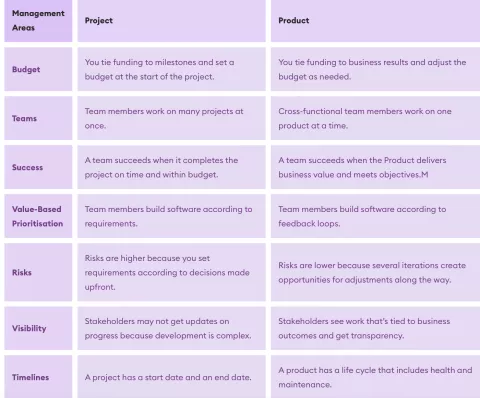
The Agile Product Mindset
A product-centric approach to software development starts with an Agile product mindset. The value for the customer increases when your organisation shifts from milestones to outcomes. The focus on value based prioritisation is a key part of the scrum framework for agile software development. It keeps IT organisations focused on the most important components and increases business agility. Agile transformation paves the way through understanding, collaboration, learning, and flexibility.
An Agile mindset includes four pillars: respect, optimisation, innovation, and improvement. Recognising every team member as a vital part of product success creates a safe and positive working environment. Optimised workflows allow teams to catch defects early, minimise waste, and maximise value. Giving teams the autonomy to share ideas and try different approaches nurtures innovation. Instituting periods of reflection on processes helps teams improve.
Agile Product Management
With an Agile product mindset in place, you can move forward with Agile product management. This adaptive approach to software development enables teams to respond to user feedback. It is an initiative that increases value and profitability by creating products in short increments. You adjust your roadmap to meet user expectations as you learn new information throughout the product’s lifecycle.
Agile product management practices include setting a strategy that defines the product vision. It should also align with business goals. Developers deliver value by getting to know customers sooner and churning out the features they want—not wasting time on ones they don’t. Teams use Agile demand management to respond to changing user needs. They follow an Agile roadmap which lays out the plan of commitments to achieve their goals.
Project managers prioritise features while keeping the product backlog and team capacity in mind. They do this by using the Cost of Delay Divided by Duration formula. This calculation helps the team determine which feature will cost the business the most money if delayed. Developers work with IT, engineering, support, sales, and marketing for the life of a product. They deliver a complete customer experience and the ability to measure product success.
Agile Governance
The Agile methodology empowers teams to make their own decisions during development. Clearly, business leaders are focused on Return on Investment (ROI), speed to market, customer satisfaction, customer retention, and employee engagement.
Product Managers monitor these metrics to determine the product roadmap and prioritise activity. Agile governance is a way for organisations to monitor deliverables by taking a big picture approach. Guiding principles for this include alignment, metrics, expectations, transparency, and practices.
Agile governance is a high-level way to ensure products meet business goals and provide customer value. Teams establish performance metrics and set expectations at the start of development. You track metrics while teams report progress—ensuring transparency. Your oversight focuses on practices—not process or documentation.
Agile MVP
You’ve conquered the mindset, implemented product management, and administered high-level governance. Now you have an Agile MVP. This “minimum viable product” is the definition of “done” in Agile. The product satisfies all criteria and is ready for the user to accept. By creating a product with basic features to fill a need, you can launch sooner, test faster, and learn how to make it better. The MVP can also be used to test a product that’s new to the market and ensure viability.
Agile MVP benefits include faster time to market, cost-efficiency, consumer research, flexibility, predictability, and a better product. Getting an operating model in customers’ hands and learning their preferences improves quality. This technique saves teams from wasting time and money building features users don’t want or need. Based on feedback, you can confirm the product’s usability or pivot in a different direction.
Project to Product Benefits
Project to Product is a more innovative way of creating software. It offers a better user experience and creates a healthier business model. Here are some reasons to switch to Project to Product in your business:
- Faster time to value: Product quality increases in real time instead of in the future, thanks to quicker feedback loops.
- More rapid pivots: Teams can use MVP research and adapt before getting too far into features customers won’t use.
- Increase productivity: Assigning teams to value streams decreases downtime. Teams don’t need to reorganise after projects are over.
- Reduce waste: Save time and money with an established, high-performing team working on a value stream. No more hopping from project to project.
- Collective ownership: Team focus shifts from short-term responsibility to long-term investment. This mindset promotes product culture.
- Higher quality: The product gets better with each iteration as users offer feedback.
- Customer alignment: The product aligns with user needs. This outcome leads to improved customer acquisition and retention.
How to Get Started with Project to Product
To get started with Project to Product, try an experiment. Establish a team, assign a product, and follow the approaches listed above. Get in the habit of moving products to teams instead of people to projects.
Catapult CX can help transform your business from Project to Product. To learn more, you can visit our Project to Product service page here. We bring teams together, break down barriers, and stay one step ahead of disruption. Using the Scaled Agile Framework helps incorporate Lean-Agile methods into your organisation.
Our lighthouse team can upskill one of your teams and establish new methodologies that add value. This starting point gives you the confidence to roll out a new way of working to the entire organisation.
If you would like to learn more about how we can help with your digital service delivery, visit the service page here.
Or reach out today and let us guide your business through digital transformation.


